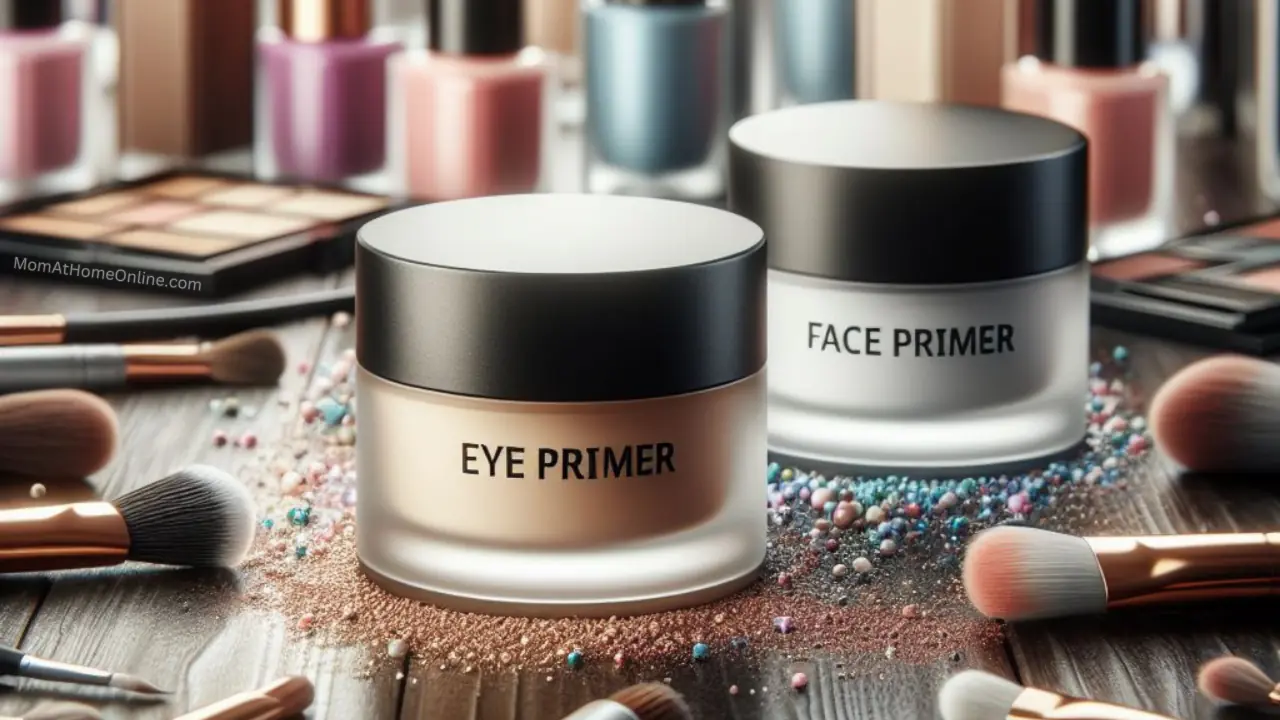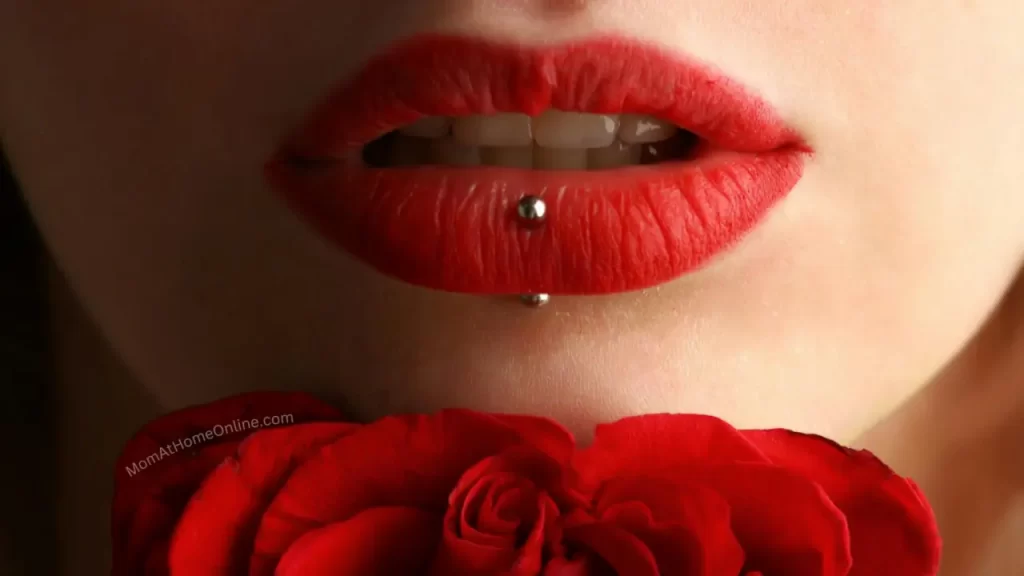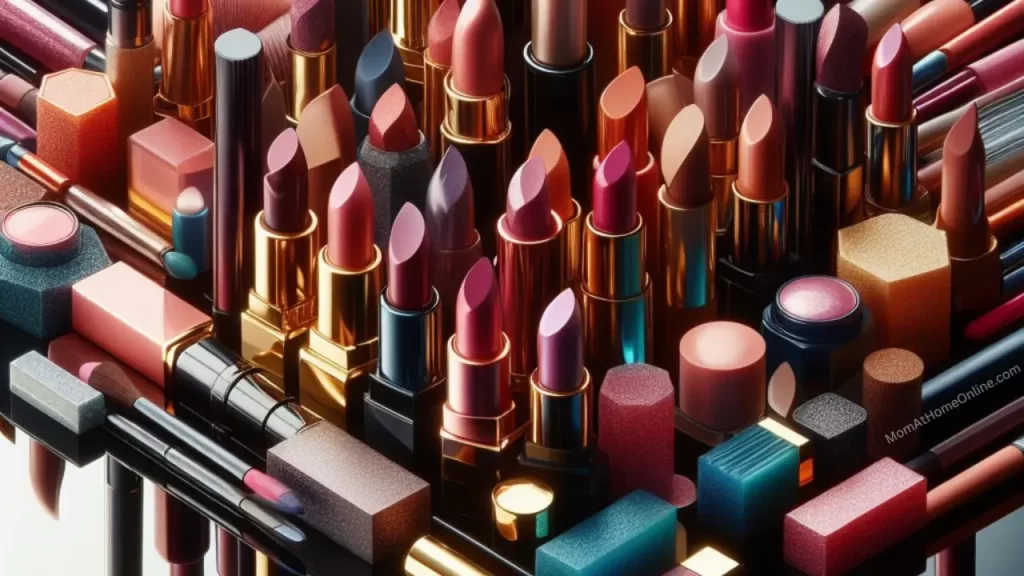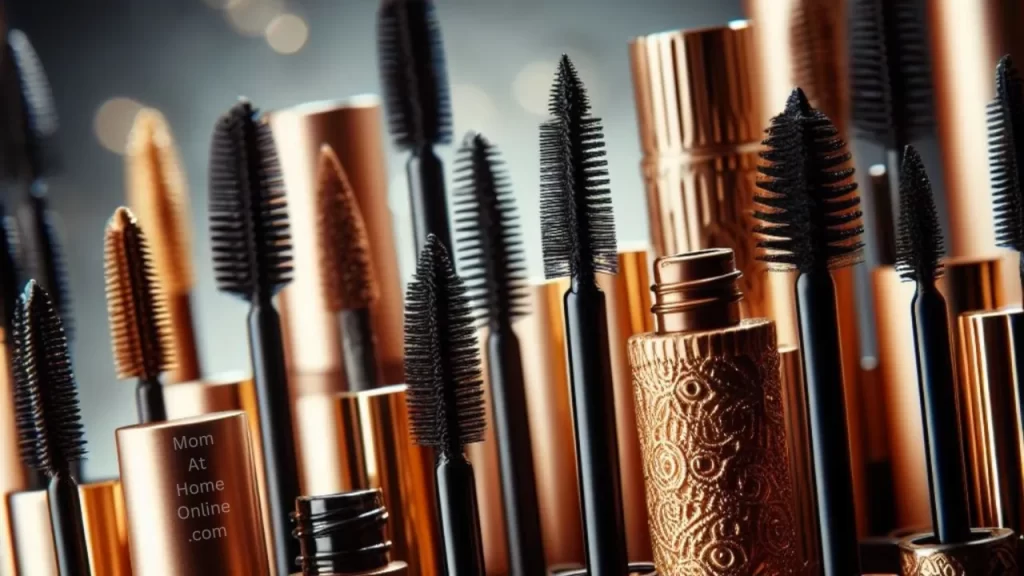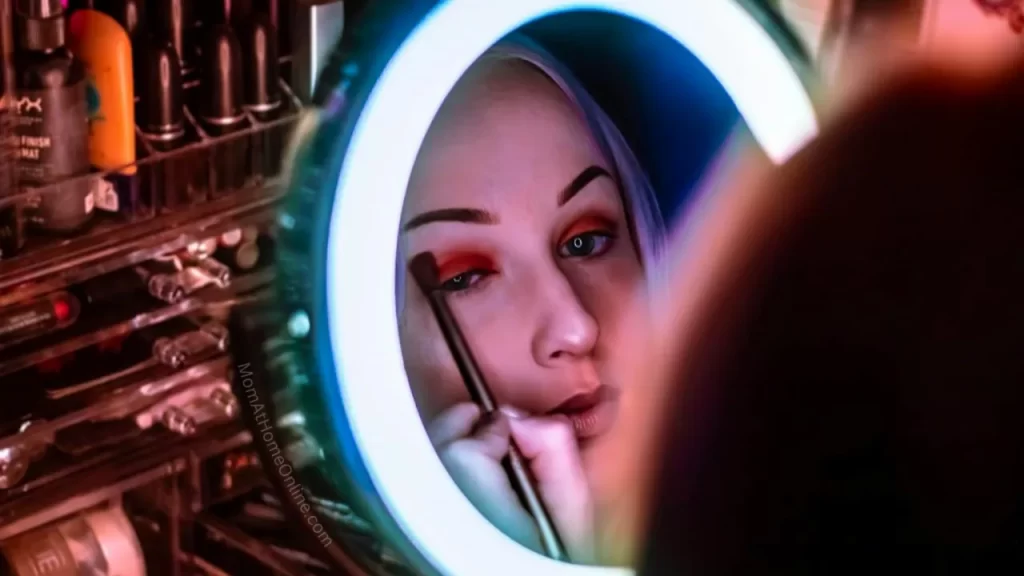Introduction
If you’re a beauty lover like me, you probably heard about different types of primers for different purposes. But do you know the difference between eye primer and face primer? They are supposed to make your makeup last longer and look smoother but do you need both of them? While both types of primers have some similarities, they also have distinct purposes and benefits.
In this article, we’ll explain what eye primer and face primer are, how they differ, and how to choose the right one for your needs. The difference between eye primer and face primer is one of the most confusing topics in the makeup world but let me break it down for you from the basics.
🔗 Affiliate Disclaimer: This article may contain affiliate links. If you purchase through these links, we may earn a small commission at no extra cost to you.
🛒 Shop worry-free. All the shopping links are 100% Safe and Secured, from top e-commerce sites.
Shopping Instruction
- Use the merchant website in the browser, instead of a mobile app, when shopping from the provided links.
- Click any link when ready to shop, add items to your cart, and complete the purchase within 24 hours.
- Your support will be highly appreciated and it will help us to run our website with more quality content.
What is Eye Primer?
Eye primer is a product that you apply on your eyelids before applying eyeshadow, eyeliner, or mascara. It has several benefits, such as
-
It creates a smooth and even base for your eye makeup, making it easier to blend and preventing creasing or fading.
-
It intensifies the color and pigmentation of your eye makeup, making it more vibrant and noticeable.
-
It helps your eye makeup adhere better to your skin preventing it from fading, smudging, or transferring throughout the day.
Eye primer usually comes in a tube or a pot, and it can have different textures and finishes. Some eye primers are creamy and opaque, while others are liquid and transparent. Some eye primers have a matte finish, while others have a shimmery or metallic finish. The choice of eye primer depends on your personal preference and the type of eyeshadow you want to use. For more details, please check out how to put on eye makeup for beginners.
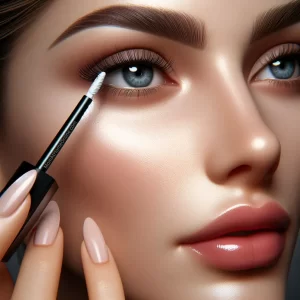
What is Face Primer?
Face primer is a product you apply on your face after moisturizing and before applying foundation, concealer, or powder. It also has several benefits, such as
-
It fills in pores, fine lines, and wrinkles, creating a smooth and flawless canvas for your face makeup.
-
It helps your foundation glide on more easily and evenly, preventing cakey makeup or streaky makeup.
-
It hydrates and nourishes your skin, adding extra moisture and preventing dryness or flakiness.
-
It controls oil and shines, preventing it from melting or sliding off and keeping your face matte or balanced throughout the day.
-
It corrects skin tone and texture issues, such as redness, dullness, or shallowness.
-
It makes your makeup look more natural and flawless. Also, extends its wear time.
Face primer usually comes in a bottle or a pump, and it can have different formulas and finishes. It usually has a thinner and more liquid consistency than eye primer. Some face primers are silicone-based, while others are water-based. Some face primers have a matte finish, while others have a dewy or luminous finish. So, the choice of face primer depends on your skin type and the type of foundation you want to use. A makeup primer guide can help you out.
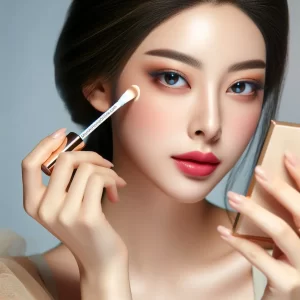
Difference between Eye Primer and Face Primer
Here are the differences between face primer and eye primer based on different aspects
Texture wise
Eye Primer
-
Thicker and more sticky texture to hold the eyeshadow in place from the constant movement of the eyes and the friction of the eyelashes and prevent creasing.
-
Not suitable for the whole face as it may make the foundation look cakey and clog pores. However, it is suitable for specific areas where extra grip is needed. For instance, if your foundation tends to slide off your nose, you can put some eye primer underneath. This will make the foundation stick better and last longer.
-
Eye Primer can have different colors and finishes depending on the effect you want to achieve with your eyeshadow.
Face Primer
-
Lighter grip to allow the skin to breathe and feel comfortable.
-
Silky-smooth texture usually contains silicone, which is great for filling in pores and smoothing out fine lines before applying your foundation. It allows the foundation to glide on easily and last longer.
-
Face primer usually has a neutral color and finish that matches your skin tone and type.
Application wise
Eye Primer
-
Start with clean and moisturized eyelids. You can also apply your foundation and concealer as usual, but avoid applying them on your eyelids.
-
Wait at least 15 seconds after applying moisturizer, or until your skin feels dry.
-
Squeeze a small amount of eye primer on the back of your hand or your finger or a brush, and dab it gently on your eyelids. You don’t need too much product, just enough to cover your lids. It can be the size of a grain of rice.
-
Blend the eye primer evenly with your finger or a brush, making sure there are no streaks or patches.
-
Wait for a few seconds for the eye primer to dry and set before applying your eyeshadow as desired, using brushes or fingers.
Face Primer
-
Start with clean and moisturized skin. You can also apply your skincare products as usual, but wait for 15 to 20 seconds to absorb before applying the face primer.
-
Squeeze a pea-sized amount of face primer on the back of your hand or your finger or a sponge, and dot it on your forehead, nose, cheeks, and chin. You don’t need too much product, just enough to cover your face. Otherwise, your makeup will be cakey at the end.
-
Blend the face primer evenly with your finger or a sponge with a light patting motion, making sure there are no streaks or patches.
-
Wait for a few minutes for the face primer to dry and set.
-
Apply your foundation as desired, using brushes or sponges.
Benefit wise
Eye Primer
-
It helps your eyeshadow last longer and prevents it from creasing or fading throughout the day.
-
It also helps your eyeliner stay in place throughout the day and prevents smudging if you want to apply it directly without eyeshadow.
-
It enhances the color and pigmentation of your eyeshadow, making it look more vibrant and true to the pan.
-
It creates a smooth and even base for your eyeshadow, making it easier to blend and apply.
-
It can correct discoloration or veins on your eyelids, giving you a flawless and uniform look.
Face Primer
-
It smooths out your skin texture and fills in pores, fine lines, and wrinkles, creating a more even surface for your makeup to glide on.
-
It hydrates and nourishes your skin, preventing dryness and flakiness that can ruin your makeup look.
-
It helps your makeup last longer and stays in place, preventing creasing, fading, and smudging throughout the day.
-
It enhances the color and coverage of your foundation or concealer, making it look more natural and flawless.
-
It can correct or improve your skin tone, depending on the type of primer you use. For example, green primers can neutralize redness, purple primers can brighten dullness, and peach primers can conceal dark circles.
Formula wise
Eye Primer
-
The formula of an eye primer can vary, but some common ingredients are silicones, waxes, polymers, and antioxidants.
-
Silicones help to fill in any pores or fine lines and create a smooth surface.
-
Waxes and polymers help to adhere the eye makeup to the primer and prevent creasing or fading.
-
Antioxidants help to protect the delicate skin around the eyes from environmental damage.
Face Primer
-
The formula of a face primer can vary depending on the brand and the ingredients. Some common ingredients that are used in face primers are waxes and silicone-based polymers, which help to smooth out the texture of your skin and create a barrier between your skin and makeup.
-
Some face primers also contain glycerin, hyaluronic acid, or aloe vera, which help to hydrate your skin and make it more supple.
-
Some face primers also contain SPF, which helps to protect your skin from the sun’s harmful rays.
Skin Effect wise
Eye Primer
-
If you are wondering whether you need a different eye primer for your skin type, the answer is not necessary. Eye primers are designed to help your eyeshadow last longer, prevent creasing, and enhance the color payoff. However, some eye primers may work better for certain skin types than others.
-
For example, if you have oily eyelids, you may want to look for a mattifying eye primer that can control the excess oil and keep your eyeshadow in place. If you have dry eyelids, you may want to look for a hydrating eye primer that can moisturize and smooth your skin.
-
If you have sensitive or mature eyelids, you may want to look for a gentle or anti-aging eye primer that can soothe and protect your skin.
-
The best way to find the right eye primer for your skin type is to experiment with different products and see what works for you. You can also read reviews, watch tutorials, or ask for recommendations from other people who have similar skin types as you.
Face Primer
-
You don’t need to worry about your skin type when you pick an eye primer, but it’s a different story for face primer. That’s because face primer has to match your skin type, or else it won’t work well. So, when you shop for a face primer, make sure you know your skin type and choose accordingly. If you want to prep your skin before applying makeup, you need to find the right face primer for your skin type.
-
If you have large pores, go for a primer that has silicone in it. It will fill in the pores and make them look smaller.
-
If you have oily skin, look for a primer that makes your skin matte. It will keep your makeup from getting shiny or sliding off.
-
If you have dry skin, choose a primer that moisturizes your skin. It will make your makeup glide on smoothly and prevent flaking.
-
If you have mature skin, pick a primer that smooths out your skin. It will hide the wrinkles and fine lines and make you look younger.
-
Some primers can also fix some skin issues like redness or dark spots. They come in different colors like purple, red, or yellow and they balance out the uneven tones on your skin.
Do you need both Eye Primer and Face Primer?
This question came to my mind before and the answer depends on factors as follows.
-
If you wear eye makeup regularly, especially for bold or colorful looks, then eye primer is a must-have. It will make a huge difference in how your eye makeup looks and lasts, and it will save you from having to touch up or fix your makeup throughout the day.
-
If you have oily skin, large pores, fine lines, or other skin concerns that affect how your face makeup looks and lasts, then face primer is a must-have. It will help you achieve a more flawless and long-lasting complexion, and it will keep your skin hydrated and balanced.
-
But if you don’t wear much makeup, or if you’re happy with how your makeup looks and lasts without primers, then you don’t need either of them. However, you might want to try them out once in a while, just to see if they can improve your makeup game.
-
Ultimately, eye primers and face primers are not essential products, but they are very useful ones. They can enhance the performance and appearance of your makeup, and they can also benefit your skin in various ways. So why not give them a try? You might be surprised by how much beneficial they can be for you!
Should we use Face Primer as an Eye Primer?
Some face primers can work well as eye primers, but not all of them. Here are some things to consider before you decide to use your face primer on your eyes, such as – The texture and consistency, ingredients and formula, and purpose and effect of face primer, which I have already mentioned above in the ‘Difference between Eye Primer and Face Primer’ section to have a better and clear understanding. Please go through that section once again before using your face primer as an eye primer.
If you still doubt whether your face primer can be used as an eye primer or not, the best way is to test yourself. Apply a small amount of the face primer on your eyelids and let it dry. Then apply your eyeshadow as usual and see how it looks and lasts throughout the day. If you’re happy with the results, then go ahead and use your face primer as eye primer. If not, then you may need to purchase an eye primer that suits your needs.
Conclusion
So, eye primer and face primer, both are very useful products for makeup lovers who want to achieve flawless results. They have different textures, usages, benefits, formulas, and effects, but they work together to enhance your beauty. By using eye and face primer correctly, you can make sure that your makeup looks amazing and lasts longer. So don’t skip these steps in your makeup routine!
Frequently Asked Questions (FAQs)
Can I use face primer as eye primer, and vice versa?
While some face primers may work on the eyes, it’s essential to consider differences in texture, ingredients, and their intended purposes for optimal results.
Do I need different eye primers for specific skin types?
Eye primers are versatile, but considering your skin type can help choose the right one. For oily lids, opt for a mattifying primer, while hydrating ones work best for dry skin.
Are eye and face primers necessary for everyone?
While not essential, both eye and face primers can significantly enhance makeup longevity and appearance. Give them a try to see the difference!
How do I choose the right primer for my skin tone?
Face primers usually match your skin tone, while eye primers can be chosen based on the eyeshadow effect you desire. Experimenting and reading reviews can help find the perfect match.
Can I skip primer if I’m happy with my makeup without it?
If your makeup looks and lasts well without primers, you’re good! However, trying them occasionally might surprise you with improved results.
Question for you
-
How many types of primer do you use for your makeup?
Please feel free to share your answer in the comment box below.
Thank you for reading this blog post. I hope you found it informative and useful. I would love to hear your thoughts and opinions on this topic. Please leave a comment below and share your feedback, suggestions, questions, or anything else you want to say. I appreciate your support and engagement.
Author
Co-founder of Mom At Home Online, MBA (HR, Marketing), Blogger, Content Creator, Ex-Representative of Avon Beauty Products, Ex-Private Tutor, Experienced Music Teacher with 2 Diplomas, Trained Yoga Enthusiast, Movie Lover, and Traveler. Read more about us…
Last Modified Date:
